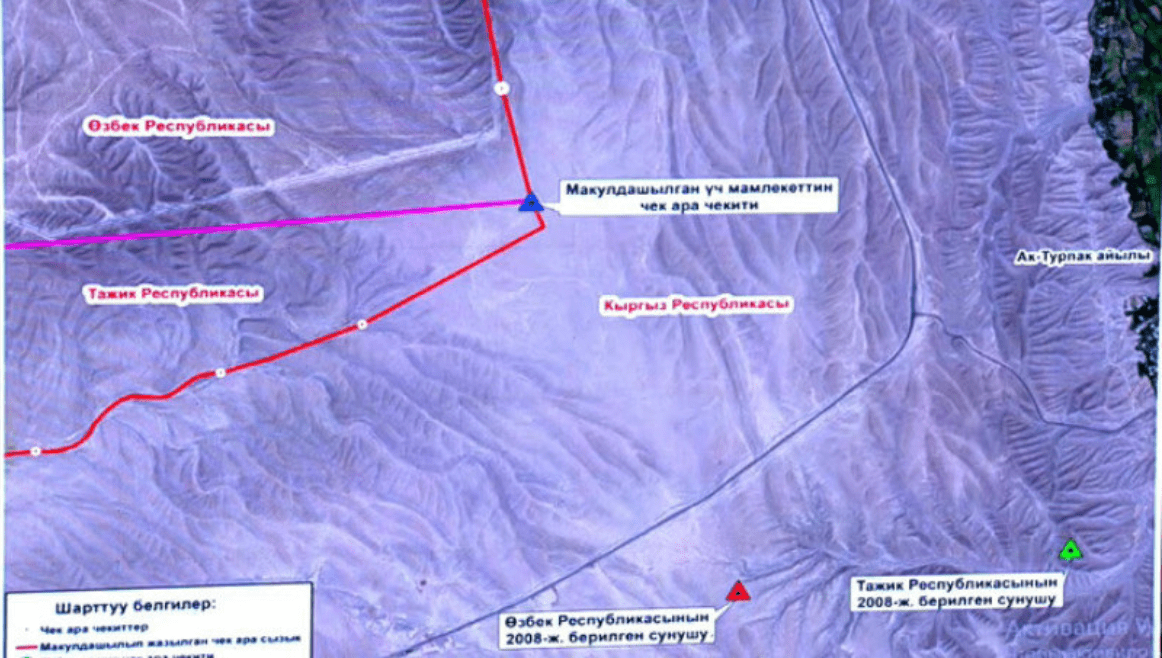Ferghana Valley Takes a Step Toward Stability as Central Asian Neighbors Settle Border Dispute
Recent Articles
Author: Ali Dayar
04/03/2025
After nearly two decades of negotiations, the countries of the Ferghana Valley have come to a border agreement. Kyrgyzstan, Tajikistan, and Uzbekistan determined their tripartite border junction point. As the recent initiatives of border demarcations stabilize the region, this provides an opportunity for the regional countries to capitalize on increasing stability by investing in greater interconnectivity. The region’s economic challenges persist, such as unemployment and dependence on remittances, making border stability a crucial step for economic integration and regional prosperity.
The Ferghana Valley, the most densely populated region of Central Asia that is home to about 15.5 million people out of 81 million in all of Central Asia, has been a hotspot of conflict since the fall of the Soviet Union. As an ethnically diverse region, it has many enclaves populated by different ethnic groups and used to have many non-demarcated borders. The breakup of the Soviet Union disrupted regional interconnectivity, leading to frequent border clashes and ethnic tensions. However, Bishkek, Dushanbe, and Tashkent have shown remarkable progress on border demarcation lately, contributing to regional stability.
On March 19, Kamchybek Tashiev, head of the National Security Council of Kyrgyzstan, stated that after the Kyrgyz-Tajik border agreement was signed earlier that month, a trilateral meeting in Dushanbe resulted in an agreement on the location of their shared border junction. The agreement is part of last month’s developments. On February 21, Kyrgyzstan and Tajikistan prepared an agreement for the demarcation of the two countries’ 970 kilometers of common borders. On March 13, Tajikistan’s President Emomali Rahmon and Kyrgyzstan’s President Sadyr Japarov signed the agreement in Bishkek. Rahmon’s first visit to Bishkek in nearly 12 years emphasizes the significance of the deal. Border demarcation efforts have continued throughout the following week, with Uzbekistan’s involvement.
 Kyrgyzstan’s National Security Committee released the map above on the tripartite junction, where the blue triangle indicates the junction of the three borders. The final version leaves Kyrgyzstan with about 100 hectares of land and an important road, though the area is uninhabited. Negotiations have been ongoing since 2007, with officials from all three nations meeting six times before finally reaching an agreement. The demarcation of the border junction is significant since the three countries overcame the dispute over the exact location of the junction by meeting in Dushanbe without external mediation.
Kyrgyzstan’s National Security Committee released the map above on the tripartite junction, where the blue triangle indicates the junction of the three borders. The final version leaves Kyrgyzstan with about 100 hectares of land and an important road, though the area is uninhabited. Negotiations have been ongoing since 2007, with officials from all three nations meeting six times before finally reaching an agreement. The demarcation of the border junction is significant since the three countries overcame the dispute over the exact location of the junction by meeting in Dushanbe without external mediation.
On March 31, the presidents of the three countries met in a trilateral meeting in Khujand Tajikistan. The meeting began cordially, with the presidents congratulating one another on Ramadan and Nowruz. Following the meeting, they signed the treaty on the junction of Uzbekistan’s, Kyrgyzstan’s, and Tajikistan’s borders and adopted a joint declaration. Uzbekistan’s President Shavkat Mirziyoyev proposed some priority sectors of cooperation such as customs modernization, expansion of infrastructure, a tripartite trading platform with a permanent exhibition of industrial and agricultural goods, industrial cooperation projects, regional projects on green energy and transport, and water management projects.
China’s involvement in the region through the Belt and Road Initiative is noticeable given the stabilization of borders. The China-Kyrgyzstan-Uzbekistan railway project is set to begin in 2025 with expected completion in 2031. Regardless of whether this timeline is achievable or not, the beginning of the project conveniently matches the year when Ferghana Valley settled its border disputes. Estimates show that the project can increase traffic from China to Central Asia by up to 20,000 containers per year, with the current traffic being about 5,000 containers.
However, the region’s economic challenges remain. Kyrgyzstan, Tajikistan, and Uzbekistan all face challenges of unemployment and foreign-workers’ remittances playing a significant role in their gross domestic products, underlining the need to address these problems. After these initiatives on border demarcation, increasing regional connectivity by improving infrastructure is more likely. With Uzbekistan’s recent plans for Middle Corridor interconnectivity along the southern route, the possibility of greater Kyrgyz, Tajik, and Uzbek economic integration has a stronger legal basis.